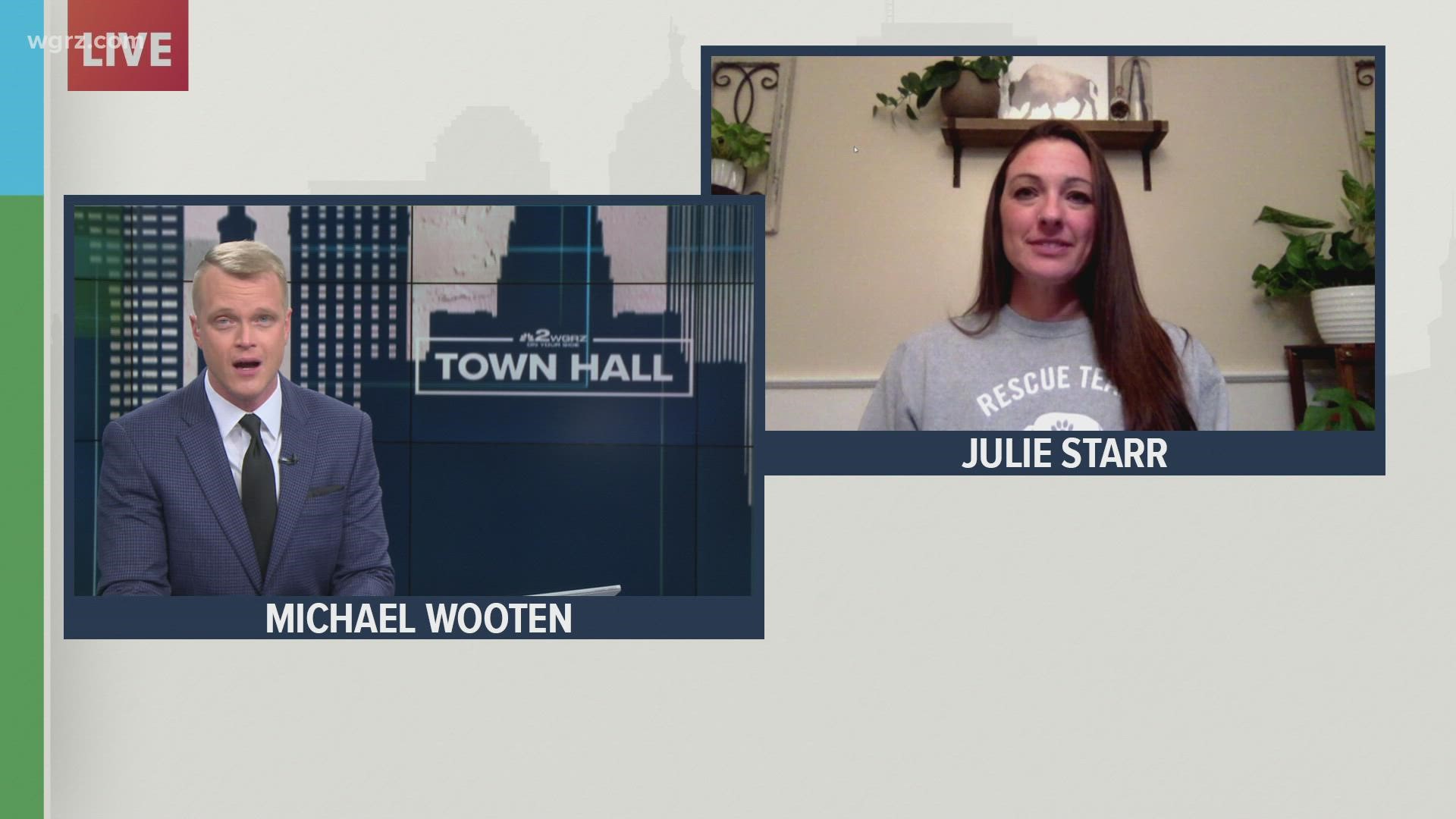BUFFALO, N.Y. — It started out with just one dog.
Back in 2013, Jennifer Manz was scrolling through Facebook and saw that an animal shelter in West Virginia was going to euthanize a dog. Jennifer, a real estate agent, reached out to her friend, Julie Starr, who was in the restaurant business about the idea of bringing the dog to Buffalo and using their networking skills to find him a home.
That dog’s name was Buddy, and after his successful adoption, the shelter reached out to the women to see if they would consider taking another dog.
That dog was Ranger. Julie fostered him for a few months until he found a good home.
Not long after that, Buddy’s Second Chance Rescue was born.
Buddy’s, like many other rescue organizations in Western New York, works tirelessly to find loving homes for homeless, abused and neglected dogs. Many are pulled from high-kill southern shelters in states like Georgia, Louisiana and Texas where the spay and neuter rates are incredibly low and many healthy, adoptable animals are put down due to nothing more than a lack of space.
The numbers are staggering. Although figures vary from state to state, the ASPCA says each year approximately 920,000 shelter animals are euthanized; 390,000 dogs and 530,000 cats.
With those numbers, how is Buddy’s and the other local rescues and shelters able to do what they do? In a word, fostering.
Many of these organizations do not have a physical shelter to house the dogs they bring to Western New York. Fostering provides an animal with a temporary home until they find their forever home and is the backbone of nearly every animal rescue organization.
Exactly what is fostering and how does it work?
"Every rescue does it differently," Starr explained. "Some people offer foster to adopt and some just offer fostering and then put the dog up for adoption."
While a dog is in its temporary home, the rescue supplies everything-crates, toys, treats, food.
"The only thing we ask our fosters to supply is the love in the home until that dog gets adopted," Starr said.
Available dogs are posted on social media and potential fosters can fill out an application for the dog they are interested in. After that, they are vetted in the same way as those interested in adoption.
Buddy’s provides as much information as they have on a dog’s age, weight, breed and temperament, and Starr says it’s not unusual to see more than a purebred dog in a transport every so often.
"We take pit bulls, we take Labradors, we take all kind of mixes you can think of," Starr said.
Transports include puppies, young adult, adult and even senior dogs.
Once an application is received, a coordinator will reach out to go over what’s involved. Starr says puppies go up for adoption five days after arriving and adult dogs seven days. Most adoptions take place within the first week, but some may stay with their foster a bit longer working with trainers on behavioral and other issues.
"It’s the most important part of a foster-based organization, obviously, because we don’t have a shelter," Starr said. "We don’t have kennels for these dogs to go to, so we depend on the foster homes to help us get them adopted."
Ashley, one of Buddy's foster coordinators, offers some advice for those considering opening their homes temporarily to an animal waiting to find its forever family.
"Fostering is not always easy, but seeing these dogs go from nothing to living their best lives, knowing they got there because of you is all the reward you can ask for," Ashley said.
Worried you might get too attached to a dog while you’re fostering and become what’s called a ‘foster fail’ ? While every rescue has its own guidelines, Buddy’s asks that you foster two dogs first before deciding to keep one.
"The best way to look at it is to pretend you’re babysitting for a friend or neighbor," Starr suggested. "We always try to tell them (fosters) how rewarding it is. Once you get that dog a home and you get the update, that’s really really worth it."
Starr says it’s not unusual for fosters to become friends with the adopters and then stay in touch through social media.
As Starr puts it, "So for every foster, we have a dog saved. And the way we look at it is, in the long run, it’s actually two dogs saved because we pull from severe high kill shelters. So for the dog you are fostering, you save that dog and then you save the dog who gets to take that place in the kennel and gets another day to live."
For more information about fostering with Buddy's or to fill out an application, click here.

